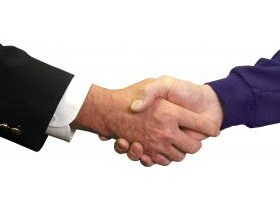
Want A Successful Merger? Be Similar Yet Different Enough
Companies frequently cite synergies as a motivation for mergers. However, research shows many related mergers do produce increased cash flows and new products
Why do some mergers work better than others? Recent research found that mergers were most successful and resulted in improved profit margins, when a firm merged with a target that was similar to itself, but different enough from its rivals to differentiate its product offerings.
Corporate matchmaking
Key to the research was the ability to measure relatedness of firms accurately in order to assess whether firms with more related businesses produce more synergies when merged. Put simply, the researchers studied what companies actually said about themselves to gauge how successfully two would become one.
“Our procedure to measure relatedness of firms uses the words that firms use themselves to describe their products,” says Gordon Phillips, a visiting finance professor at INSEAD and the Bank of America Professor of Finance at the University of Maryland. “If firms use similar words to describe their products, there is a good chance that the firms share similar vision and approach to doing business as well as having products that can be successfully integrated. We score document similarity by just comparing the product descriptions that firms publish as part of their 10Ks at the Securities and Exchange Commission,” Phillips says. “What we are attempting to capture is whether there is sufficient complementarity in firms to make their merger or acquisition a success but enough differences from potential rival firms so that rival firms cannot replicate the benefits of the merger.”
Magic castles
Two examples of successful mergers illustrate the point. Disney, a company well known for traditional animated films and theme parks, purchased Pixar, a company (created by Steve Jobs during the years he was out of the Apple CEO chair) that made computer-generated children's films. The link-up gave Disney the creative boost its cinematic output needed and gave Pixar access to a huge distribution network. Disney then parlayed Pixar characters into strategic marketing vehicles, using the likes of Buzz Lightyear in Disney theme parks and toys.
“The Disney-Pixar merger is consistent with Disney choosing Pixar because it is similar enough to permit new product synergies,” Phillips told INSEAD Knowledge. “Following the merger, many Disney computer-animated movies (e.g., Toy Story, A Bug’s Life, Cars) have been produced using Pixar technology and distributed by the merged company.”
Another example of a successful acquisition/merger is General Dynamics (GD)-Antheon. Both firms offer products that are indeed related but are also somewhat different: GD focuses on large “old economy” military equipment including land vehicles and ships, and Antheon serves the same primary client but focuses on military applications based on computing and intelligence.
Phillips says that the GD-Antheon merger is consistent with GD choosing Antheon because it is similar enough to permit asset complementarities and new product synergies, as well as successful managerial integration. Here, new products might take the form of military vehicles that incorporate real-time applications of Antheon’s technology given the growing role of information in defence. This merger also might help GD to differentiate itself from its rivals and introduce new products, which in turn will improve profit margins.
Caveats
Phillips adds that if two firms merge in a field already crowded by established firms producing similar products, then nothing new may be produced by the merging firms. However, if the firm is already in a competitive product space, it may be able to merge with a somewhat distinct firm that allows it to produce new products that are not produced by rival firms.
The methodology used to measure relatedness can best be compared to a combination of Facebook and Match.com. In Match.com, the software can suggest potential good matches based on similarities of interest and similarities of words that individuals use to describe themselves. “We also measure relatedness between any two pairs of firms and then classify firms into “relatedness clusters” just like a Facebook circle of friends. We build variable industry clusters which can then capture how firms are related to each other and which firms share enough words to be classified as producing in the same industry,” says Phillips.
Prediction
Does it then mean that one can safely predict M&A (Mergers and Acquisitions) using this method? “Of course it is never possible to predict with certainty that an M&A will be successful and many mergers do fail,” says Phillips. “Failure may be the result of intangible or human factors we cannot measure. Mergers can be viewed like R&D (Research and Development) which often times is not successful. However the gains from success can be substantial and firms may also lose if they do nothing and do not attempt to introduce new products both through M&A and also through R&D.”
[This article is republished courtesy of INSEAD Knowledge, the portal to the latest business insights and views of The Business School of the World. Copyright INSEAD 2024]





